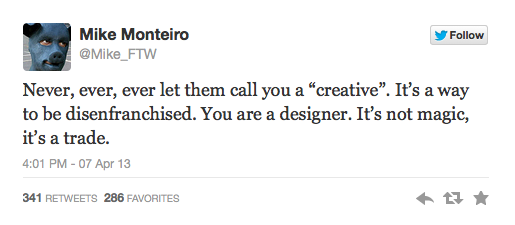By Cennydd Bowles from A List Apart:
Childish, inaccurate, bizarre, and condescending? Perhaps—but you can’t just ignore articles like that. Tomas Chamorro-Premuzic’s Seven Rules for Managing Creative People1 has caused some serious ripples. The article sets lofty standards for missing the point, misrepresenting creative industries to the point of infantilization. At its nadir—“Creatives enjoy making simple things complex, rather than vice versa”—it ranks among the most baffling things ever written about creativity.
Commenters have heaped scorn on poor Chamorro-Premuzic, to the extent that I must almost apologize for adding to the criticism. But I’m intrigued by the views that prop up articles like this. Why do these misconceptions about creative work persist in an era of supposed innovative enlightenment?
The premise that underpins this and many similar articles is that creativity is a binary property: some people are blessed (or cursed) with it, others aren’t. This establishes a subtle, unwelcome construct. Creative types are “The Other”: fundamentally irregular people who don’t quite gel with the rest of society (“The Same”). Indeed, what it means to be Same is usually defined in part by not being Other.
While the language of Otherness is sometimes a deliberate tool of oppression, more often it reflects the unthinking bias of the speaker and era. Chamorro-Premuzic’s framing of creative people as The Other is no doubt unintentional. But the archetype is clear nonetheless.




